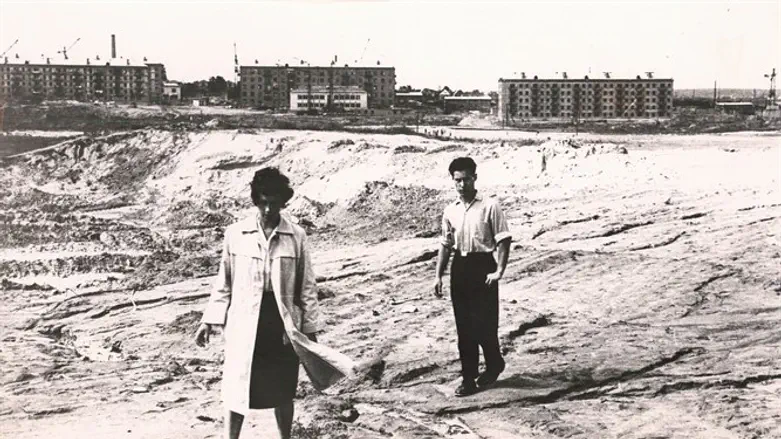
(JNS) When my father was 6 months old, my grandparents put him in a burlap sack and smuggled him out of Ukraine as they fled the pogroms of 1921. Their destination was Poland, which they considered a relatively safe haven. To make sure he stayed quiet and did not draw unwanted attention, they put a cloth on his mouth, fearing any sound that emerged from the sack could result in immediate death. They prayed that he would make it, and to their great relief, he did.
Thanks to their determination to survive I am alive to tell their story, and that of Europe’s Jews.
Several weeks ago, at the 100th anniversary of their escape, I became chairman of the Yad Vashem World Holocaust Remembrance Center and a great responsibility was placed on my shoulders. Having served as Israel’s consul-general in New York for four years, I could easily cross international borders and enjoyed diplomatic immunity, unlike many European Jews in the early part of the 20th century, who had to hide their Jewish roots. I felt privileged because of this freedom, feeling emotional every time I saw the words “State of Israel” and the menorah—Israel’s national emblem—on my passport and in my heart.
The difference between my border-crossing experience and the story of my father and his parents is nothing short of amazing. This is just one example of the transformation that the Jewish people have undergone since those days. During the Holocaust, the world descended into the darkest abyss it has ever known, as millions of Jews were murdered systematically. I consider myself one of the lucky Jews who were born because their family managed to escape before these tragic events. The Holocaust is part of our collective Jewish experience, and even though Yad Vashem belongs to the Jewish people, it bears great significance to all of humankind.
The 80th anniversary of the Babi Yar massacre is marked this week. The event, in which Nazis and Ukrainian collaborators murdered 33,771 Jews, took place on Sept. 29-30, 1941, on the eve of Yom Kippur. As if that atrocity was not bad enough, for many years Nazis and then Soviets added insult to injury by actively trying to destroy any evidence that could attest to these horrors.

To mark this anniversary, I will be making my first official visit to Europe as the head of Yad Vashem. I will arrive at Babi Yar, where I will hold an academic discussion on this topic alongside the presidents of Israel, Ukraine, Germany and Albania. The event is organized by the Ukrainian government and held under the auspices of the Babyn Yar Holocaust Memorial Center, which is building a museum there.

I will represent the memory of those who were murdered there and the six million Jews who perished in the Holocaust. There is a Jewish, human and moral imperative to remember those who were murdered in the ravine of death and to make sure that their names never disappear into oblivion.
We must ensure that wherever the Holocaust is memorialized—especially in a place that some wanted to erase from history—historical truths live on forever and remain protected.
Yad Vashem will not allow the memory of the Holocaust to fall by the wayside. It is committed to preserving this memory and instilling it today and for posterity, both among Jews and among humanity as a whole.
Dani Dayan is chairman of the Yad Vashem World Holocaust Remembrance Center.

Credit for photos:
In the 1960s the coverup of the massacre began to end, with publication of Yevgeny Yevtushenko’s famous 1961 poem, “Babi Yar”, as well as Anatoly Kuznetsov’s 1966 book of the same name, and a broader movement led by young local Jews interested in their own heritage and history.
In 1966, on the 25th anniversary of the massacre, an unofficial memorial sign was hung at the Babi Yar site, which on subsequent anniversaries drew thousands of local Jews, including Yosef Mendelevitch, for example, and would become a central force in the awakening of Soviet Jewry. Grassroots efforts also began around that time to locate the mass graves in the area, something else which was certainly not a priority for the Soviet authorities.
Soviet dissident and Zionist activist Joseph Schneider photographed some of the early efforts to remember Babi Yar. Babi Yar, in 1966. These rare photos were preserved in the personal archive of one of the leaders of this movement, an engineer named Emmanuel (Amik) Diamant, and they recently came to the Central Archives for the History of the Jewish People at the National Library of Israel. They were sent to Arutz Sheva by Zack Rothbart Manager, Global Content & Media Relations, The National Library of Israel, Jerusalem.
